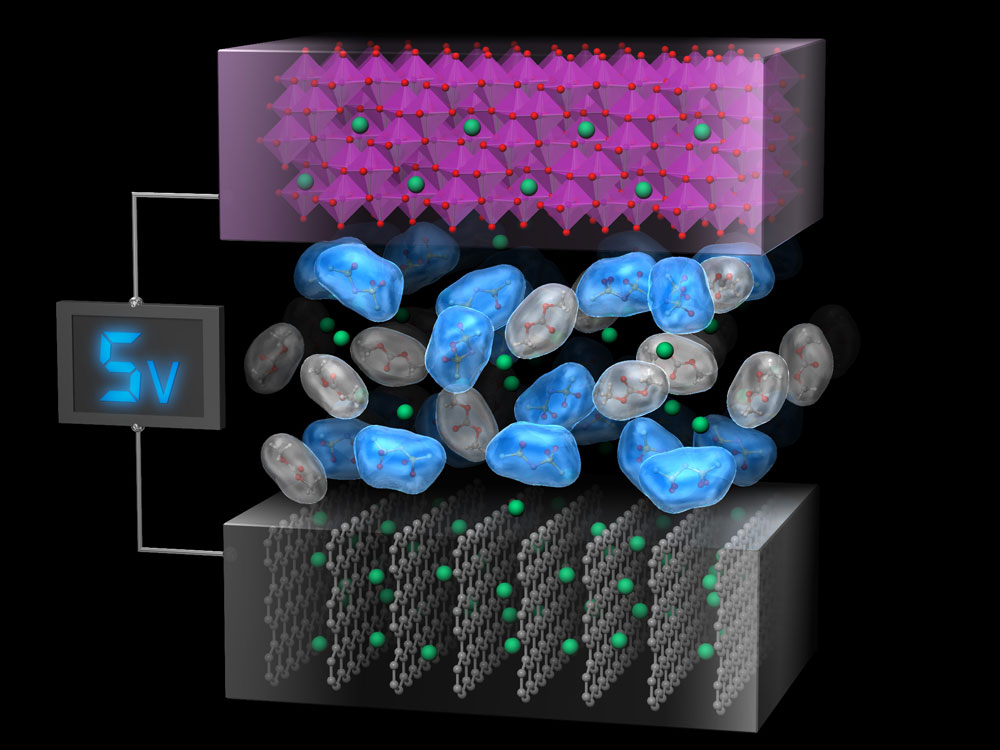高電圧リチウムイオン電池用の超高濃度電解液
Superconcentrated electrolytes for a high-voltage lithium-ion battery
2016年6月29日 Nature Communications 7 : 12032 doi: 10.1038/ncomms12032

5V級の次世代リチウムイオン電池の実現に向けて、新たな電解液の探索が重要課題となっている。これまで、高電圧における金属イオンの溶出が電解液設計の障害となっていた。従来の電解液で使用されているLiPF6塩は、化学的に不安定であり電極材料中の遷移金属の溶出を加速させる一方、アルミニウム集電体の酸化溶出を抑制するという重要な役割がある。LiPF6を化学的に安定なリチウム塩で置き換えると、遷移金属の溶出は軽減できる一方、アルミニウムの酸化腐食が致命的な問題となる。今回我々は、このジレンマを解消する電解液設計について報告する。我々は、極めて高い濃度の安定リチウム塩LiN(SO2F)2と炭酸ジメチル溶媒を混ぜることによって、Li+イオンに強く配位するアニオンと溶媒分子が三次元ネットワークを形成する特殊な液体を得た。この超高濃度LiN(SO2F) 2/炭酸ジメチル電解液は、非常に単純な組成であるが、5V付近でアルミニウムと遷移金属の両方の溶出を抑制することができ、優れたサイクル耐久性、高いレート特性、高安全性を示す高電圧LiNi0.5Mn1.5O4/黒鉛電池を実現することができる。
Corresponding Authors
Finding a viable electrolyte for next-generation 5 V-class lithium-ion batteries is of primary importance. A long-standing obstacle has been metal-ion dissolution at high voltages. The LiPF6 salt in conventional electrolytes is chemically unstable, which accelerates transition metal dissolution of the electrode material, yet beneficially suppresses oxidative dissolution of the aluminium current collector; replacing LiPF6 with more stable lithium salts may diminish transition metal dissolution but unfortunately encounters severe aluminium oxidation. Here we report an electrolyte design that can solve this dilemma. By mixing a stable lithium salt LiN(SO2F)2 with dimethyl carbonate solvent at extremely high concentrations, we obtain an unusual liquid showing a three-dimensional network of anions and solvent molecules that coordinate strongly to Li+ ions. This simple formulation of superconcentrated LiN(SO2F)2/dimethyl carbonate electrolyte inhibits the dissolution of both aluminium and transition metal at around 5 V, and realizes a high-voltage LiNi0.5Mn1.5O4/graphite battery that exhibits excellent cycling durability, high rate capability and enhanced safety.

